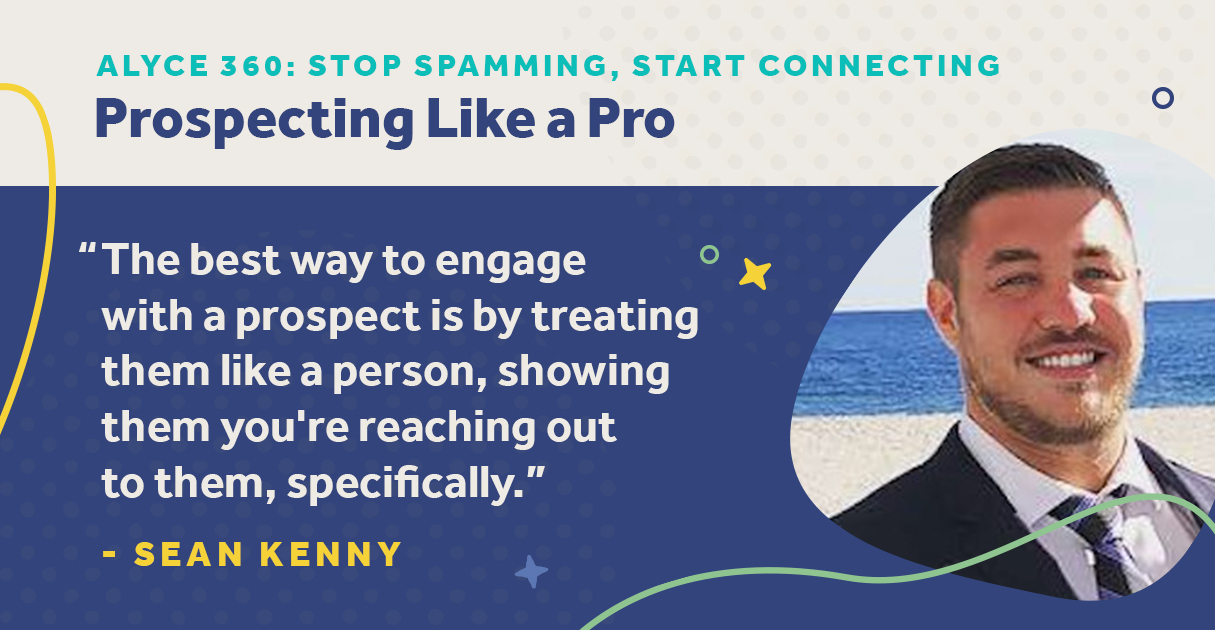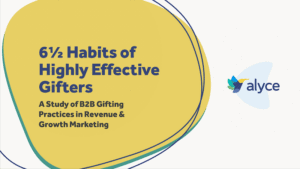
Building a list of contacts at target accounts to engage with is extremely important for any sales and marketing team that has a heavy outbound or ABM strategy. While Alyce is the perfect conversation starter for these key contacts, Alyce alone is not the silver bullet. But when coupled with a quality list, magic can happen.
Defining Your Ideal Customer Profile
An Ideal Customer Profile (ICP) is a set of defined criteria that infers the types of companies that should buy your product, not just can buy your product. Having a well-defined ICP brings clarity to your marketing and sales organizations so you can focus on going after the companies that will get the most value from your product or service and in turn, be most likely to buy from you. When defining your ICP, that exercise shouldn’t be done in a vacuum. Rather, incorporation from other teams is crucial to making sure you are evaluating it from every angle. For example, getting insights from your Customer Success team as to which customers are seeing the most success and identifying commonalities among them should have a heavy influence. This will show you which types of accounts have a higher likelihood of a long-lasting relationship with you.
Tools I use to help me with account selection: LinkedIn SalesNav, ZoomInfo, DiscoverOrg, Datanyze.
Targeting ‘Personas’ To Prospect
Once your organization has determined its ICP, and then isolated accounts that fit that profile, you can start getting more granular. I repeat: you should be crafting your personas after you have identified your ICP. After all, it’s nearly impossible to develop effective buyer persons without first understanding the type of company they work at.
Step one to developing your personas is to really understand what pain points your product is solving within these companies. Once you have that, you can figure out which role or function in that organization this product is going to impact most directly, and furthermore, who is responsible for seeking a solution to that problem.
You can design personas for these individuals by working with someone on your product marketing team. This exercise should identify which job titles this persona has, what their day-to-day is like, and where your product is going to make the most impact for their area of focus. A persona arms you with the confidence to talk to them with a shared sense of understanding and empathy; not just spitting out product features and hoping they make the connection.
Tools I use to help me with contact identification: LinkedIn SalesNav, ZoomInfo, DiscoverOrg.
Prospecting: Timing Is Everything
Have you ever heard the expression, “A day late and a dollar short”? Sales can feel like that, as timing is everything. Sometimes you’re too early to the conversation, and while that doesn’t necessarily mean you won’t eventually get the sale, you have a higher likelihood of getting the sale across the line more quickly if your product solves a pain that is currently top of mind for a prospect. Or even worse, you’re too late to the party altogether.
Understanding timing is not as easy as finding the right account and the right contact. Fortunately, there are many platforms out there to help you understand intent. The companies that fit your ICP and have demonstrated intent should be prioritized.
Tools I use to help me with intent data: 6sense.
Digging Deep
Schoolhouse Rock! was right; knowledge is power. Here are other ways I try to get to know the accounts and contacts I am targeting better before I begin any outreach to them:
- If I already have some contacts, then I will go to their LinkedIn and Twitter page and scroll through their feed to see what they are posting, liking, or sharing, and see if any of it is relevant to what my product can solve for.
- I follow hashtags relevant to my product offering on Twitter and LinkedIn. Once a day I scroll through all the people that are posting and commenting about this topic. Then I do the steps backward to check them out on LinkedIn to see if their company fits our ICP and what role they have on the team. If all signs point to yes, then I will add the account and/or contact to my list.
- When an ICP company raises funding, read all the articles they post about it. Usually, they will give some insight as to what they are looking to invest in next and maybe you can align your product to it.
- With public companies, read their earnings reports and see what areas had a down quarter or what they’re looking to do in the upcoming quarter to see if your product can support their strategy.
Tools I have used to do some extra reconnaissance: LinkedIn, Twitter, Fortune Term Sheet.
Strategic Engagement With Prospects
After you have an awesome list of contacts at rockstar companies that make sense for you to carry out an outbound strategy. Think critically about what you want to say to them. This is the most important advice I have in this entire post: treat them like a person and not like the buyer persona you carved out for them.
The goal of engaging is simply to start the conversation; not to treat them all the same so you can mass blast your list, not to lead with “I” and write all of your product features in an email. The best way to do this is by treating each of your prospects like an individual person, with individual motivations and interests, instead of as their manufactured persona. Show them that you took the time to do your homework and get to know them on a 1:1 level before reaching out.
Tools I have used to humanize my outreach and start new business conversations: Alyce, of course!





